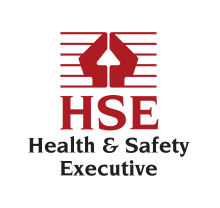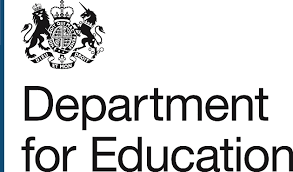This page shows the guidance from the Health and Safety Executive and the non-statutory advice from the Department of Education for schools organising work experience
Health and Safety Executive (HSE) on work experience
“work placement arrangements are too often seen as over-bureaucratic and burdensome, putting off potential employers. We must tackle this and stop over-interpretation of the law.
The effectiveness of the employer’s risk management arrangements is what matters. Employers should already be managing the risks in their workplaces and are best placed to assess whether or not they need to do anything additional for a new young person joining them.
Schools and colleges, or those organising placements, should simply ask sensible questions, in proportion to the level of risk, to satisfy themselves that those arrangements are in place.
They should not be second-guessing employers’ risk assessments or requiring additional paperwork.
An appreciation of risk and how to deal with it can be one of the biggest benefits offered by a placement. We need young people (those under 18) to be offered opportunities to develop new skills and gain experience across the world of work.”
Do’s and Don’ts
Work Experience Organisers
Do:
- remember that the placement provider (employer) has primary responsibility for the health and safety of the student and should be managing any significant risks
- take reasonable steps to satisfy yourself that they are doing this. For employers who are new to taking students on work experience, talk through what the student will do and any relevant precautions. It might be helpful to make a note of your conversation
- rely on past experience, or pooled experience, for example within the local authority area. You do not need to do it all again for a new student where an employer is known to you and has a good track record, and the student’s needs are no different to those on past placements
- work with parents to ensure employers know in advance about students who might be at greater risk, for example due to health conditions or learning difficulties, so they can take these properly into account
- keep checks in proportion to the environment:
- for a low-risk environment, such as an office or shop, with everyday risks that will mostly be familiar to the student, simply speaking with any new employer to confirm this should be enough. This can be part of the wider conversation on placement arrangements
- for environments with less familiar risks (eg in light assembly or packing facilities), talk to the employer to find out what the student will be doing and confirm the employer has arrangements for managing risks. This will need to include induction, training, supervision, site familiarisation, and any protective equipment that might be needed
- for a placement in a higher-risk environment such as construction, agriculture and manufacturing:
- discuss with the employer what work the student will be doing or observing, the risks involved and how these are managed. Remember that although the placement might be in a higher-risk environment, the work the student is doing and the surroundings they are working in may not be, for example it could be in a separate office area
- satisfy yourself that the instruction, training and supervisory arrangements have been properly thought through
- check that the employer understands about the specific factors[2] relevant to employing young people
- check that students know how to raise any health and safety concerns
- Don’t
- repeat the process for a new student, or visit unnecessarily, where an employer is known to you and has a good track record, and the student’s needs are no different to those on past placements
- seek additional paperwork for assurance purposes, or seek to second-guess the employer’s risk assessment or their risk control measures:
- you are unlikely to have the knowledge to evaluate the assessment
- this could give the false impression that you have ‘approved’ it
- employers with fewer than five employees are not required to have a written assessment
- duplicate checks on employers. Schools and colleges using a third party to arrange placements should work with them to make sure employers are not requested to do things twice
http://www.hse.gov.uk/youngpeople/workexperience/organiser.htm
DfE advice on Health & Safety
The employer has the primary responsibility for the health and safety of students whilst on a work experience placement. Education or training providers must satisfy themselves that an employer has assessed the associated risks to workers under 18 on their premises and has suitable and sufficient risk management arrangements in place. Checks by education or training providers must be kept in proportion with the risk environment. For low risk environments, assurance can be gained through a conversation with the employer. A physical inspection by education providers or requiring the employer to complete lengthy forms should not take place.
There is no requirement for a separate risk assessment for work experience students where an employer already employs young workers under 18, as the risks should already have been considered. Where work experience students are the first young workers an employer takes on (or the first for some years), the employer should review the existing risk assessment. For some higher-risk environments, the employer will need to consider specific factors where relevant – these are described in the HSE guidance.
In the rare case where an accident may happen on an employer’s premises, provided the education or training provider has taken appropriate steps to satisfy themselves that the employer has put in place measures to manage the associated risks in their work place, they will normally have done enough to comply with the law. These steps are described in HSE’s guidance, page 12.
Employers’ Liability Compulsory Insurance
As part of the government’s Red Tape Challenge, ministers have written to employers confirming that the insurance industry has committed to treat work experience students as employees so that they will be covered by existing Employers’ Liability Compulsory Insurance policies. If an employer has Employers’ Liability Compulsory Insurance cover already, they do not need to buy additional cover.
16-19 study programmes: guide for providers, page 12
Insurance requirements for the voluntary sector
If the voluntary organisation employs staff, students on work experience placements will be covered by their existing Employers’ Liability Compulsory Insurance policy. If the voluntary organisation only has Public Liability Insurance, they will need to obtain temporary Employer Liability Compulsory Insurance for the duration of the placement.
16-19 study programmes: guide for providers, page 13
Disclosure and Barring Service (formally CRB)
From July 2012 providers are no longer required to carry out enhanced Disclosure and Barring Services checks on employers/staff supervising young people aged 16 to 17 on work experience.
For young people intending to undertake work experience in the Health Care and Early Years Sector, they will need to have an enhanced DBS check before starting on their placement. Providers will need to factor in these costs to the total programme cost and also plan for the time it takes to complete an application (which could be up to 4 weeks).
16-19 study programmes: guide for providers, page 13
Ofsted
Work experience is inspected and reported on as an integral part of the inspection of provision for 16 to 19 year olds (and up to age 24 for traineeships) against the Common Inspection Framework for FE and Skills 2012.
Ofsted state that work experience must be purposeful and planned. It should give young people the opportunity to develop vocational and employability skills in real working conditions.
Work experience should contribute to students’ overall development. For example, when considering outcomes for students, inspectors will explore how well they can develop their employability and vocational skills and personal effectiveness (e.g. attendance, attitudes, punctuality, and behaviour) in relation to their starting points while on work experience.
Similarly, when inspecting teaching, learning and assessment inspectors will explore how well students on work experience have been prepared beforehand, the tasks they are set and whether they receive detailed feedback on their progress.
The inspection of leadership and management will evaluate the extent to which work experience is purposeful for each student, how well it fits into the other aspects of their study programme and that appropriate steps have been taken by the employers to provide a safe environment.
Work experience in providers’ realistic working environments, such as college companies; provide good opportunities for students to develop initial vocational skills, knowledge and employability skills. However, this should not be seen as an alternative to external work experience, especially if work experience is a substantial part of their programme.
Students can often get employer references for their performance on work experience and realistic working environments do not provide this.
16-19 study programmes: guide for providers, page 11
Careers & Enterprise Company: 1-2 Week Work Experience
Key Facts
Better work experience also benefits businesses by providing opportunities to engage and develop their future workforce, improve uptake of apprenticeships and drive employee engagement.
Top Tips for Delivery
Plan well and prepare the student.
Activities should be meaningful.
Provide the employer with support and top tips.
Allow plenty of time for reflection and follow-up.
Links
Work Experience HSE
http://www.hse.gov.uk/youngpeople/workexperience/index.htm
Cutting through the bureaucracy HSE
http://www.hse.gov.uk/youngpeople/workexperience/cutting-bureaucracy.htm
Myth Busters Challenge Panel HSE
http://www.hse.gov.uk/contact/myth-busting.htm
Schools/organisers information HSE
http://www.hse.gov.uk/youngpeople/workexperience/organiser.htm
DfE guidance
Departmental advice for post-16 education and training providers
Careers & Enterprise Company: 1-2 week work experience



